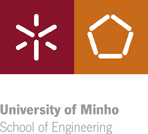[14] Costa, I, Szklo, A, Schaeffer,
R “ Methodology for hubs placement analysis and an application
to Rio de Janeiro state, Brazil” 2nd International Conference
on Energy & Environment (ICEE), 18-19 June 2015, Guimarães,
Portugal. pp 221-229
Abstract
Carbon capture and geological storage (CCGS) is recognised as a technology capable of reducing large-scale emissions of carbon dioxide (CO2), which is an important part of the portfolio of alternatives necessary to achieve significant reductions in the global emissions of greenhouse gases (GHG) (IEA, 2010; IPCC, 2007; ROCHEDO, 2011; NOGUEIRA et al., 2014; COSTA, 2009; COSTA, 2014). As of this context where greenhouses gases constrains in industrial Brazilian sector would come, and CCGS would be a mitigation option for GHG, it becomes necessary to develop a CO2 transport network planning to collect and inject it in a proper geological reservoir. Therefore, the following methodology can help to implement a pipeline network in any region in the world by doing a preliminary analysis about the best places to locate a HUB (temporary CO2 reservoir). In this paper, the application of the methodology refers to Rio de Janeiro state, in Brazil.
Abstract
Carbon capture and geological storage (CCGS) is recognised as a technology capable of reducing large-scale emissions of carbon dioxide (CO2), which is an important part of the portfolio of alternatives necessary to achieve significant reductions in the global emissions of greenhouse gases (GHG) (IEA, 2010; IPCC, 2007; ROCHEDO, 2011; NOGUEIRA et al., 2014; COSTA, 2009; COSTA, 2014). As of this context where greenhouses gases constrains in industrial Brazilian sector would come, and CCGS would be a mitigation option for GHG, it becomes necessary to develop a CO2 transport network planning to collect and inject it in a proper geological reservoir. Therefore, the following methodology can help to implement a pipeline network in any region in the world by doing a preliminary analysis about the best places to locate a HUB (temporary CO2 reservoir). In this paper, the application of the methodology refers to Rio de Janeiro state, in Brazil.
| Back to results |




